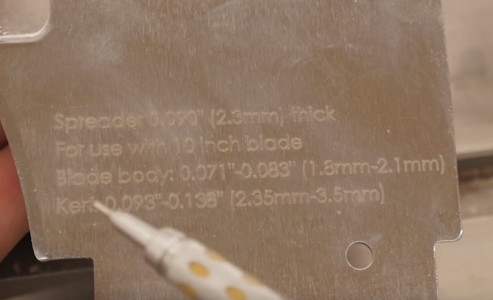- Joined
- May 27, 2016
- Messages
- 3,469
Does the riving knife plate that mounts close behind a circular saw blade have to be at least as thick as the saw blade cut width?
I have one of those reconfigurable aluminium saw table units with fence that has adapter mounts to fit most portable circular saws and routers underneath. I use it in "table saw" mode, presently using a claimed "thin" type saw blade. The teeth measure 2.12 mm wide (3/32") and the riving knife seems to be made of 2mm plated steel.
If I were to try a thicker stiffer blade, having kerf 2.8mm or more, do I have to install a thicker riving knife?
I have heard that a circular saw can suddenly "launch" the work across the room, or up out of the saw.
I have one of those reconfigurable aluminium saw table units with fence that has adapter mounts to fit most portable circular saws and routers underneath. I use it in "table saw" mode, presently using a claimed "thin" type saw blade. The teeth measure 2.12 mm wide (3/32") and the riving knife seems to be made of 2mm plated steel.
If I were to try a thicker stiffer blade, having kerf 2.8mm or more, do I have to install a thicker riving knife?
I have heard that a circular saw can suddenly "launch" the work across the room, or up out of the saw.


